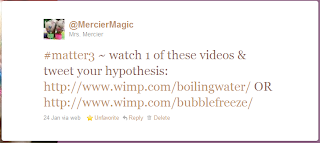Future Ready
As educators, we are tasked with educating the two largest generations ever - Generations Z and Alpha. Both generations have grown up with technology, although slightly differently, creating the largest generation gap since Baby Boomers hit the scene. While Gen Z (last graduating class is 2028) continues to quickly adapt to the ever evolving tech, Gen Alpha was born with an iPad (both arrived in 2010). For most of us this just means we expect to communicate with each other - via text, video calls, or social media. For our students, technology is more than that; it is not a tool but a singularity in their lives.
Our students are constantly connected and the global access that technology provides has not only made them the smartest generation ever, but also the most empathetic generation ever. Global access allows them to rapidly expand their knowledge, meaningfully connect with others, be more aware of global issues, generate and seek solutions (at younger and younger ages), and impact global change. They will be the most transformative generations ever. They will leverage the world.
This requires us to radically rethink education. We are on the right path, and yet have much work to do to effectively engage our students. While many schools have increased technology purchases and are integrating the use of technology into curriculum, an alarming 35% still need to provide WiFi access. Our students want more than access to technology. They need more than being able to play educational games on a device. They expect more than writing a paper in Google Drive.
How do we as educators support our students’ global impact efforts?
- Create 1:1 environments through purchases and/or BYOD
- Ensure a strong WiFi connection that can handle a multiple user load
- Design relevant and meaningful learning opportunities that uses technology in a way that redesigns learning
- Allow students to hackschool - design their own projects, learning experiences, classes, and majors
- Provide student choice
- Personalize learning
- Increase digital resources
What does this look like in action? Invite students to use technology to solve the problems of drought or food shortages. They can become investigative journalists who uncover FastFashion issues and propose both cost effective and civil alternatives. Our youngest students can share digital documentation of the best part of themselves as a way to celebrate diversity and self worth. Have them share their voice about social injustices (locally and/or globally) on Twitter Chats. Most importantly, listen to their interests and pay attention to how they are using technology.
Note: This post is based off of research I had completed for my LMS certification and what has been driving the transformation of my own Library Media Space.
Note: This post is based off of research I had completed for my LMS certification and what has been driving the transformation of my own Library Media Space.

Comments
Post a Comment